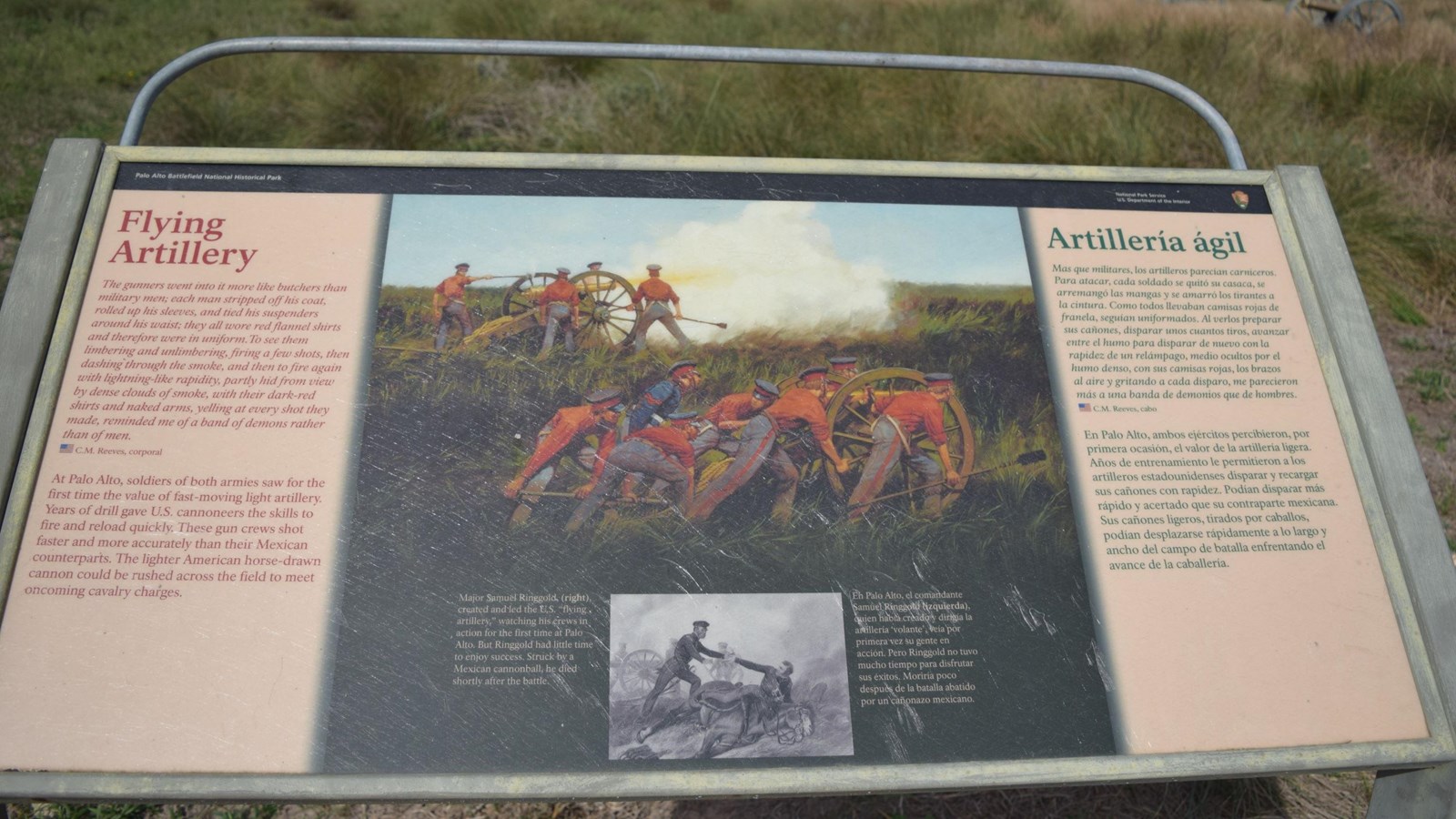Last updated: April 23, 2025
Place
Flying Artillery Wayside

NPS Photo
Quote Text
The gunners went into it more like butchers than military men; each man stripped off his coat, rolled up his sleeves, and tied his suspenders around his waist; they all wore red flannel shirts and therefore were in uniform. To see them limbering and unlimbering, firing a few shots, then dashing through the smoke, and then to fire again with lightning-like rapidity, partly hid from view by dense clouds of smoke, with their dark-red shirts and naked arms, yelling at every shot they made, reminded me of a band of demons rather than of men. ~ C.M. Reeves, corporal
Main Text
At Palo Alto, soldiers of both armies saw for the first time the value of fast-moving light artillery. Years of drill gave U.S. cannoneers the skills to fire and reload quickly. These gun crews shot faster and more accurately than their Mexican counterparts. The lighter American horse-drawn cannon could be rushed across the field to meet oncoming cavalry charges.
Sub Text
Major Samuel Ringgold, (right), created and led the U.S. "flying artillery." watching his crews in , action for the first time at Palo Alto. But Ringgold had little time to enjoy success. Struck by a Mexican cannonball, he died shortly after the battle.
Image Descriptions
Center
Historical depiction of U.S. light artillery crews in action at the Battle of Palo Alto.
Center Bottom
Historical depiction of Major Ringgold after receiving his mortal wound.
